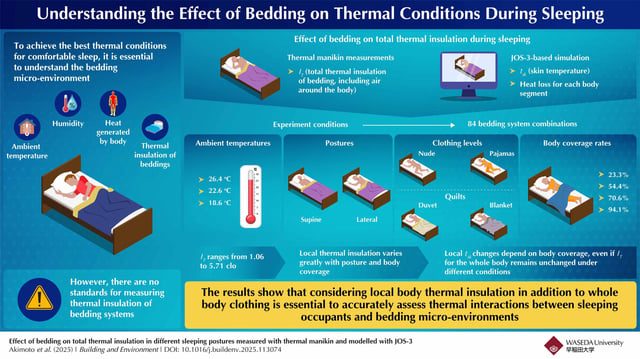Overview
- A Waseda University–led team tested 84 combinations of bedding, sleepwear and body postures using a heated thermal manikin in a climate chamber.
- Total thermal insulation values varied from 1.06 to 5.71 clo depending on posture, coverage rate and material layers.
- JOS-3 human thermoregulation models showed that identical overall insulation can mask large local skin temperature differences when different body parts are covered.
- Researchers warn that relying solely on whole-body insulation is insufficient and call for methods that integrate both local and total thermal responses.
- Findings establish benchmarks for optimizing sleep environments and provide inputs for multi-segmental thermoregulatory models to predict heat stress during sleep.
